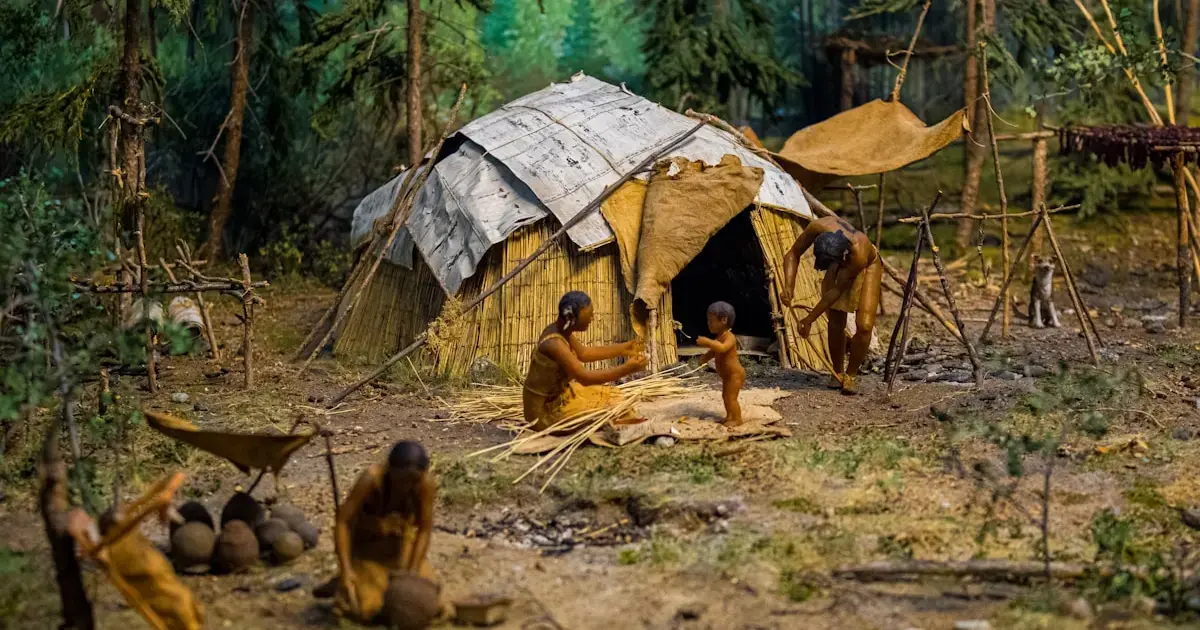 For years, a stereotype has dominated the scientific community, suggesting that our distant relatives, the , who went extinct 30,000 years ago, subsisted solely on meat. This theory was supported by numerous studies. However, recent discoveries have revealed that Neanderthals consumed a variety of other foods, including many plant-based options.
For years, a stereotype has dominated the scientific community, suggesting that our distant relatives, the , who went extinct 30,000 years ago, subsisted solely on meat. This theory was supported by numerous studies. However, recent discoveries have revealed that Neanderthals consumed a variety of other foods, including many plant-based options.
To uncover the diet of ancient humans, scientists typically analyze the number of atoms with different neutron counts in their nuclei, known as isotopes (for example, carbon-13, nitrogen-15, etc.). These isotopes are preserved in teeth and act like fingerprints, revealing what humans and animals ate thousands of years ago.
“Authors of many independent isotopic studies have reached the same conclusion. Neanderthals exhibit isotopic signatures characteristic of high-level predators,” said Ludovic Slimak, a paleoanthropologist from the University of Toulouse (France), in an interview with Live Science.
For instance, an analysis of calcium, strontium, and zinc isotopes obtained by researchers at the excavation site in Gabasa (Spain) indicated that Neanderthals were hypercarnivores, primarily consuming meat and bone marrow. According to Slimak, they were apex predators, like wolves and hyenas, sitting at the top of the food chain with no natural enemies.
“This idea is supported by previous nitrogen isotope studies,” noted Herve Bocherens, head of a team of biogeologists at the University of Tübingen (Germany).
Nitrogen exists in two stable forms, or isotopes, such as nitrogen-14 and nitrogen-15. When one animal eats another, the heavier nitrogen-15 gradually accumulates in its body. This means that carnivorous creatures have higher levels of nitrogen-15 than herbivores.
In most of the Neanderthal samples studied, the nitrogen-15 content was higher than that found in large predators like cave lions, cave hyenas, or wolves, Bocherens explains. Therefore, his team concluded that Neanderthals were “more carnivorous than predators (or hypercarnivorous).” However, the biogeologist added that this is an overly simplistic understanding of the issue. The nitrogen levels can vary depending on the types of animals Neanderthals consumed, not just the quantity of meat they ingested.
“Woolly mammoths consistently show the highest levels of nitrogen-15 among herbivores, likely due to their consumption of plants with high nitrogen-15 content. The data suggest that Neanderthals were predators who consumed mammoths more than other carnivorous animals in the ecosystem,” Bocherens remarked.

Could Neanderthals survive on a meat-only diet?
Researchers believe that Neanderthals would not have survived on meat alone if their physiology resembled that of modern humans. This is quite possible, says Bocherens. The issue is that consuming excessive amounts of protein without sufficient fats and carbohydrates, which provide most of our energy, can lead to a fatal condition known as protein poisoning.
Scientists argue that fat was the saving grace for Neanderthals. In Germany, at their 125,000-year-old site, researchers found evidence that our distant relatives systematically broke animal bones to extract fat from the marrow. Another likely source of fat was animal brains.
Researchers agree that Neanderthals also consumed plants when they were available. According to April Nowell, a professor of anthropology at the University of Victoria (Canada), there is ample evidence that Neanderthals ate plants. Among this evidence are plant residues found on stone tools, as well as in dental plaque and fossilized feces.

Remains found in modern-day Israel showed that Neanderthals consumed legumes, acorns, and pistachios, Professor Nowell reported. She noted that in Greece and Iraq, scientists found evidence that Neanderthals soaked, crushed, and ground lentils, nuts, and herbs. At Neanderthal sites in Gibraltar, researchers discovered charred remains of edible plants, such as wild olives and pine nuts. Additionally, starch grains found on stone tools in Italy hint that Neanderthals even made a type of flour.
In the El Sidrón cave in Spain, Neanderthals consumed plants like yarrow and chamomile (likely for medicinal purposes). This was revealed through chemical analysis of dental plaque.
According to Robert Power, a research fellow at the School of Archaeology at University College Dublin, in warmer regions, the Neanderthal diet included seeds, dates, and starchy root vegetables like tubers.
“Although Neanderthals were skilled hunters who largely relied on animal foods, they adapted their diet based on where and when they lived, adjusting to local food sources,” concluded Professor Nowell.
Photo: Unsplash
